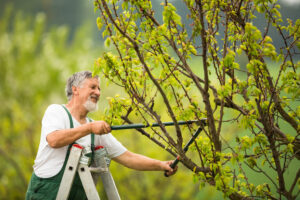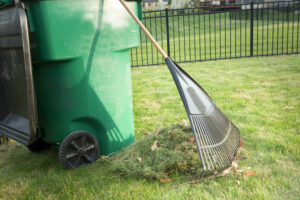The key to keeping your landscapes healthy without breaking the budget is optimization. Optimizing how you water your lawn and your plants will help them grow stronger and healthier. The trick is to do so without washing your money down the drain. For lawns, you want to look at the design and irrigation setup to ensure you are watering evenly without excess. For planter beds, consider different watering methods for your unique plants to optimize your system. This article has just a few of the many principles that you can use to optimize your landscape’s water usage.
Lawns
When trying to optimize your irrigation, first look at the design of your lawn. For example, square lawn patterns are easier to water due to their linear design. More curved lawn patterns often result in areas of the lawn being over or under watered. Proper head layout, correct nozzle type and spray distance will help your lawn get the adequate amount of water while avoiding runoff and waste. Make sure that the irrigation set up for your lawn runs separate from the irrigation set up of your planter beds. Proper head layout for your lawn should follow the rule that each head is placed within 10% of the spray radius. For example, a zone of sprinklers with a 15ft radius should be within 13.5-15 feet of each other. In real world applications, ideal irrigation layouts are hard to come by, which is why the 10% layout range is needed.
Another great tool for optimizing your lawn’s water usage is an irrigation audit. An irrigation audit will help you find where your system is not operating in a uniform manner. The audit will test how much water is applied to certain areas of your landscape using cups/measuring basins. Adjustments can then be made to create a uniform level of water throughout the area. The more uniform an irrigation system operates, the easier it is cut down on overwatering. Residents can ask for a free water check at Save the Flow’s website.
Water Check Program – USU Extension
Grass and soil types factor into how much you should water. Turfgrasses need to be watered more frequently, but not as deep as your average bluegrass. Fescue grasses (narrow-leaved grasses) also need more water than typical bluegrass lawns. Soils are a mixture of sand, silt, and clay. Know your soil type when deciding how to water your lawn. To test your lawn personally, use the glass jar method. If you would prefer a professional soil test, universities like Utah State University offer excellent services. Most Utah lawns are bluegrass and have a clay loam soil type. Most lawns should receive ½” of water every session and an irrigation audit is a great way to calculate how long your specific sprinklers take to put out that ½” of water. To better understand your lawn’s weekly water requirements, try follow the guidelines of the Division of Water Resources Conservation Program.
The grade of your landscape also factors into sprinkler optimization. Sloped areas of a lawn are hard to irrigate and can present challenges such as runoff. A common practice used to alleviate this issue is called a cycle soak. If there is a sloped area of your lawn experiencing runoff, stagger the watering throughout the day. Make sure to also consider your soil type when using this technique. Typically Utah soil is more clay loam based and water doesn’t move very well through it. If, for example, the lawn needs 15 minutes of watering, but it only takes 5 minutes for the water to soak into the soil and roots, staggering those 15 minutes will avoid wasted runoff. You want to let the water infiltrate the soil and root system, while also flowing through the slope’s soil. In this example you would want to water this area of your lawn 3 times a day for 5 minutes with about an hour break in-between cycles.
Sloped Lawn – Reader’s Digest

Planter Beds
Using drip systems is usually the most efficient method for watering your plants. Two popular options for watering your plants are the point source systems and grid systems. Point source systems are commonly used in landscape designs that have sparse configurations. The system’s main purpose is to water a plant specifically at its individual root zone. It works great for plants that have unique watering needs in certain locations of your landscape. It also helps prevent weeds by only watering where it is needed.
The grid drip system, or dripline (with in-line emitters), is best for densely planted areas and narrow strips of grass or plants. Netafim is a great dripline to use. Some people prefer to place dripline systems near the plants and focus the watering there. However, some plants such as ground cover, want a more grid shaped pattern of drip to allow the entire bed to be evenly watered. This way plants can grow out and re-root anywhere in the bed, allowing for more natural, unhindered growth.

Grid dripline system – Netafim
It is critical to know what plants you have and the style of watering they need. It is hard to say how long a plant should be watered, but here are some concepts to follow. Make sure you group plants together that have similar watering styles to avoid over-watering and competition. Annuals will grow their roots up to 6” deep while perennials and shrubs grow roots up to 12” deep. Plants with large leaves or thin leaves generally will need more water than succulent plants. Succulent plants can store water better due to their fleshier stems and leaves, allowing them to store more water during drought conditions.
The location and surroundings of the plants are another key factor in choosing how to water them optimally. The southwest part of a property usually gets the most heat from the sun and plants there will need more water. Plants near sidewalks, streets or buildings also get more heat radiating on them. To know if you need to water, use a soil moisture sensor or simply feel the soil with your hand to see if its dry. Smart controllers, like Smart Rain, help automate the watering of your planter beds and help make the timing much easier (even though smart controllers are more applicable to turf areas.) It is best to water plants in the morning so insure that the leaves have moisture on them and they don’t dry out. Leaves with moisture can help prevent diseases in the root systems.
In the overall scheme of optimizing your landscape’s maintenance, remember to personalize your setup. For lawns you need to consider their design and layout. Make sure the sprinklers are providing an even coverage and that their time schedule is adapted to your landscape’s grade. For your planter beds using drip systems can really help make your job easier. However, plants can be diverse and will require some attention to ensure the watering will match their more temperamental needs. If you have any more questions or would like to hear more about subjects discussed in this article, please
















